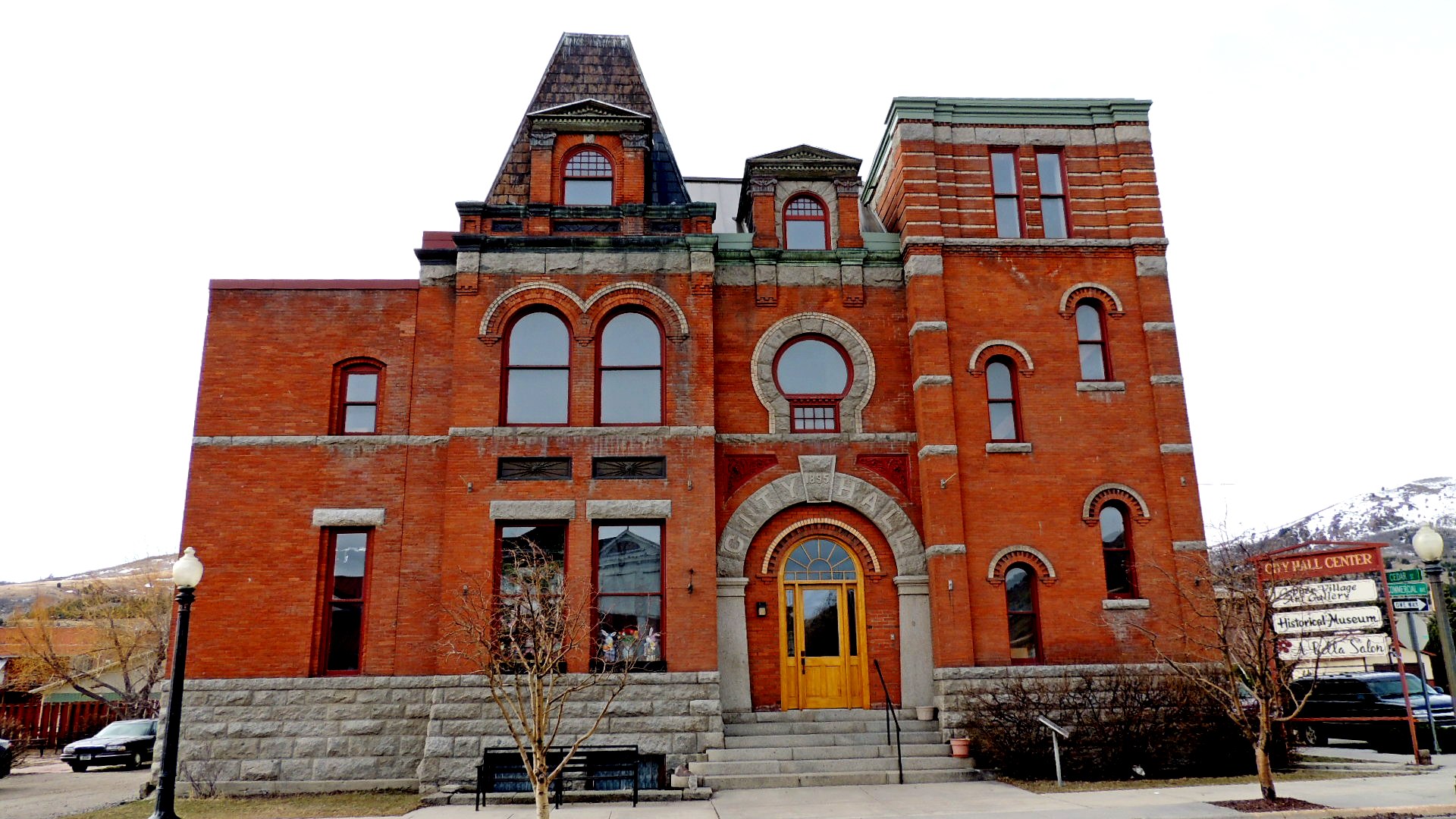|
 City Hall - Anaconda, MT Posted by:  T0SHEA T0SHEA
N 46° 07.768 W 112° 56.888
12T E 349504 N 5110277
In the hope that Anaconda would soon become Montana's capital, the powers that be at the time furnished the city with a rather ambitious City Hall. Completed in 1896, though it no longer serves as Anaconda's City Hall, it remains a city landmark.
Waymark Code: WM15Q3D
Location: Montana, United States
Date Posted: 02/07/2022
Views: 2
Completed in 1896, though it no longer serves as Anaconda's City Hall, it remains a city landmark. Of substantial brick and stone construction, the city hall originally housed the city government, the police and a jail, and the city fire department. The fire department and the police have since departed and the city government has moved to newer premises, but the jail cells in the basement remain, now housing the historical society.
The basement and a smaller portion of the main floor are now the site of Anaconda's Marcus Daly Historical Museum, previously the Copper Village Museum, which houses a multitude of artefacts from Anaconda's heyday, when the smelter belched smoke 24/7 and the town was a boisterous frontier village of miners and smelter workers. The museum also hosts various travelling exhibits and annual quilting exhibits and student art displays.
CITY HALL
Copper magnate Marcus Daly had great expectations for Anaconda when the town was platted in 1883, hoping one day the town would become Montana’s capital. It was with that goal in mind that plans for a magnificent city hall were conceived. Architects Lane and Reber of Butte, winners of a competition for the building’s design, drew the blueprints for the symbolically and historically significant civic landmark, completed in 1896. Built in a “straightforward manner … using local materials,” the architects employed pressed brick, Anaconda granite, and Anaconda copper trim. The complex design illustrates the passionate eclecticism of the late Victorian era, incorporating elements of a variety of styles. A massive corner tower, bays, and pavilioned entrance visually define the original separate functions of the building: city government, fire hall, and police department. Contrasts of round and square forms serve to augment these divisions. Classical detailing, Roman and Romanesque style arches, Moorish “keyhole” windows, Gothic tracery, and a Chateauesque style roof capping one of the bays are a visual feast and showcase local craftsmanship. Abandoned in 1976 and slated for demolition, the building was rescued by local citizens in 1978. Though a clock tower housing the fire bell was removed, the rehabilitated City Hall Cultural Center is once again a thriving and impressive source of civic pride.
From the NRHP plaque at the building
Anaconda City Hall
Marcus Daly, a fugitive from the Irish potato famine, came to America at the age of fifteen, and rose from errand boy and pick-and-shovel miner to create a copper empire that would dominate Montana s economy and politics and made its influence felt nationwide, upon occasion.
Daly chose Anaconda as the site for his home and rapidly expanding smelting operations, designed to refine the rich ore deposits Daly was developing on "Butte's Richest Hill on Earth". Daly bought the land for $20,000, chose the town site, and the city plat was completed June 25, 1883.
"Pretty As A Peach" is the way an ANACONDA STANDARD reporter described the plans for the new City Hall in the March 21, 1896 issue of the paper. "The new city hall is going forward rapidly and already begins to show a very handsome building of which Anaconda may well be proud". The April 17, 1896 issue of the ANACONDA STANDARD reported that the architects, Lane and Reber, stated the City Hall would be "the finest municipal building in the State," and that it would be built in a "straighforward manner... using local materials:" Anaconda pressed brick, granite, and trimmed with Anaconda copper. The City Hall, then, meets criteria C as a building of stylistic significance and is expressive of fine craft technique in the handling of both the brick and wood work.
An August 23, 1896 newspaper story reports, "It is a beautiful interior..hardwood finish with some scroll and turn work. The council chamber is head and shoulders above anything else in the State, to say nothing of the magnificence of the office rooms... the stairway is a fine piece of workmanship and substantial." The building was built with the idea that Anaconda would be the Capitol of Montana, (re: WAR OF THE COPPER KINGS), and, therefore, possesses great symbolic as well as local historical significance. (Criteria A)
Anaconda aldermen held their first meeting in the new City Hall chambers on September 10, 1896, and the building was in continuous use by the local government until the fall of 1978 when demolition plans were about to be implemented as a part of the Anaconda Community Development Agency's six-block re-development plan. Destruction was averted by a court action of a local citizens' group, aided by a grant from the National Trust for Historic Preservation.
From the NRHP Nomination Form  Visit Instructions:
To post a visit log to this waymark you need to visit and write about the actual physical location. Any pictures you take at the location would be great, as well.
|